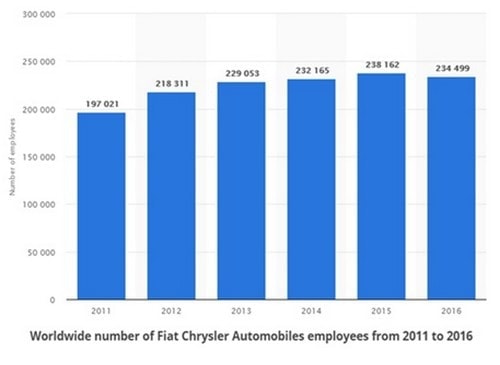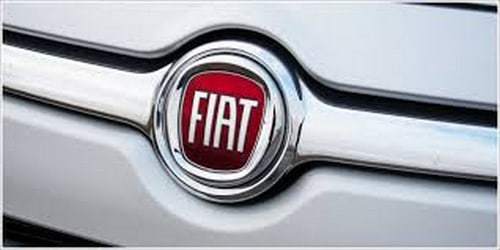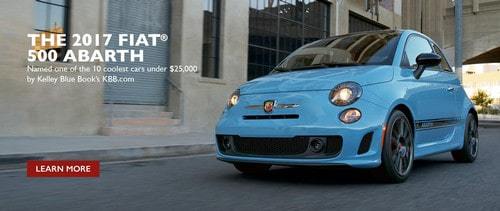Fiat Automobiles, the Italian automobile manufacturer is the largest automobile manufacturer in Italy and is a part of Fiat Chrysler Automobiles which was formed in 2014 through a merger of Fiat and Chrysler.
Fiat group operates through 16 brands globally some of which are Chrysler, Ram, Jeep, Fiat, Dodge, Alfa Romeo and Maserati, the Ferrari etc. In FY 2016, the Fiat Group shipped more than 4.5 million vehicles and generated about 111 billion euros of revenue.
Table of Contents
Segmentation, targeting, positioning in the Marketing strategy of Fiat–
In order to align its strategy with the taste and preferences of the customers the company defines the population features and characteristics and so the automotive brand uses the mix of demographic, Psychographic and geographical segmentation strategy.
The Fiat operates with different brands under its portfolio some of which uses selective targeting strategy and other uses differentiated targeting strategy.
The company uses value-based and usage positioning strategy to create a boastful image enriched with experience in the mind of the customers.
Marketing mix – Here is the Marketing mix of Fiat.
SWOT analysis – Here is the SWOT analysis of Fiat.
Mission- “Not Available”
Vision- “Not Available”
Tagline-“Simply More”
Competitive advantage in the Marketing strategy of Fiat–
1. Strategic focus on re-strengthening the brand- Fiat Automobiles which is the part of Fiat Chrysler automobiles since the company has reorganized its automobiles business has been trying to optimizing its resources by exiting loss market, decreasing employee headcounts and several others steps which are helping the company in controlling its operational cost.
2. Broad Portfolio: Having such large number of brands in its product portfolio is proving beneficial for the company as far as competition, penetration to the emerging market and economies of scale is concerned.
BCG Matrix in the Marketing strategy of Fiat-
The group operates in business segments such as Automobiles, production systems, Iron & Casting and Retail & dealer financing, Leasing and rental services.
The automotive business, Iron & casting and Dealer financing by virtue of automobile business are Stars in the BCG matrix while other businesses of the group are the question mark.
Distribution strategy in the Marketing strategy of Fiat–
With its 162+ manufacturing facilities, 88 R & D centers and distributors in more than 160 countries globally the company is manufacturing, designing, engineering, and selling vehicles and related accessories/ components.
The company have dealers and distributors network in more than 150 countries worldwide which distribute brands such as Jeep, Lancia, Ram, Maserati, Chrysler, Dodge, Abarth, Alfa Romeo, Fiat, Fiat Professional, and Mopar.
Brand equity in the Marketing strategy of Fiat–
The brand Fiat has been the well-known brand in the automobile industry. It has been ranked 224th in the Forbes Global 2000 list (May 2017) and has been valued at $15.5 billion (based on Market Capitalization method). The brand’s revenue stands at $ 122.81 billion as of May 2017.
The company have been associating itself with various racing events as well as has sponsored sports events time to time which is helping the brand in increasing visibility in the market and high TOMA (top of mind awareness).
Competitive analysis in the Marketing strategy of Fiat-
Most of the companies in the automotive market compete on the basis of the design, technological advancement and offerings the brand have in different segments i.e. Sedan, Hatchback and in SUV’s (sports utility vehicle).
Fiat competes with companies like Volkswagen, Suzuki, Toyota, Honda, Hyundai etc. Fiat Chrysler has been known for its unique design, elegant and affordable as well as premium segment luxury cars.
The company is present in all the segments which are instrumental in keeping it ahead of the peer companies in the market.
Market analysis in the Marketing strategy of Fiat-
The automobile market is sensitive to several economic and financial conditions such as cyclic demands, Fuel and crude oil prices, disposable income, consumer confidence, currency fluctuations, or competition in the market.
Most of the automobile company do forward, vertical and backward integrations in order to address the changing needs of the customers and Fiat is not an exception to this. Fiat business is mostly dependent on dealer financing, leasing and renting of infrastructure to the distributors and suppliers.
Customer analysis in the Marketing strategy of Fiat–
Fiat operates in customer segments ranging from B2B companies, Dealers & distributors and Retails customers.
While some of its brands are targeted to the middle & upper middle-income class who are in the age group of 30 to 45 years, the brand like Ferrari have offerings which are targeted for celebrities/ super-rich customers globally.
Liked this post? Check out the complete series on Strategies



